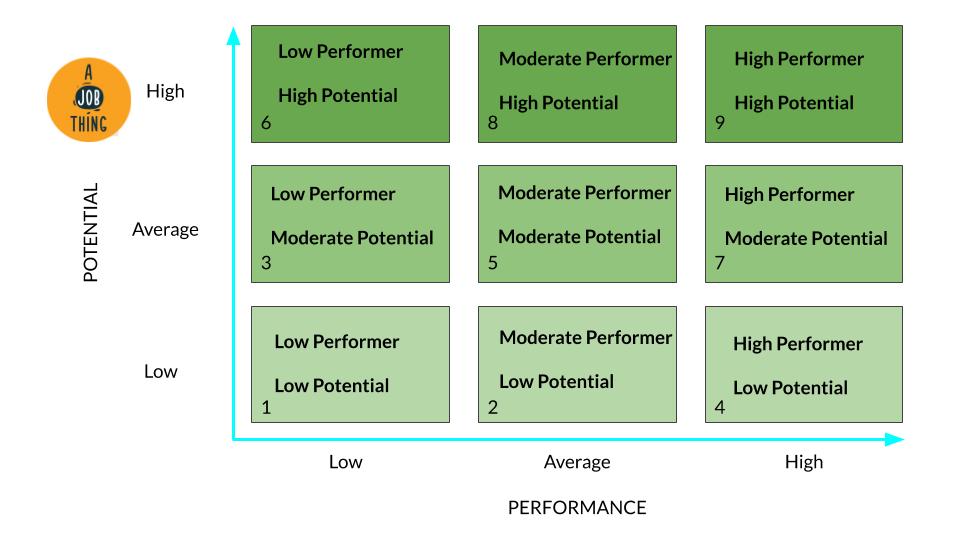
HR Guide: Managing Talent Using the Nine Box Grid Model
Are You Hiring?
Find candidates in 72 Hours with 5+ million talents in Maukerja Malaysia & Ricebowl using Instant Job Ads.
HIRE NOW
In this article, we will explain the nine-box grid model and how it works in HR.
What is the nine-box grid?
The nine-box grid is a tool devised to display the employees’ performance, talents, and potential. It is also a good way to better monitor these talents and develop them further. The model can be used for team and talent development and talent spotting.
Team development becomes more transparent and supervisors will gain crucial information about their employee’s strengths.
How the nine-box grid works
In the grid, the employees are mapped against two axis, usually current performance and future potential.

The Nine Box Grid Model
The x-axis is for the employees’ current overall performance, and the y-axis represents their future potential. They are categorised into three stages:
- Low
- Average/normal
- High
These combinations form nine different boxes, each with their own characteristics. You can then enter the names of individual employees into the grid. The model makes it easier to see the value of each staff member at an overview.
Most of the time, it is the manager who decides which box of the model employees should be positioned. There are three elements that decide how the nine-box grid is filled out:
- The employee’s performance,
- The supervisor’s experience with that employee, and
- Their estimate of the employee’s (growth) potential
A supervisor can use a pen to write down the employee name, but it’s easier with post-it notes or a whiteboard. That way, names can easily be moved, and the box in which an employee is placed is not permanent.
By making it a team activity, it can lead to interesting discussions about what ‘performance’ and ‘potential’ mean exactly and how they can be seen in the work people carry out.
Characteristics of the nine boxes
1. Low Performance / Low Potential:
- The employee does not meet the requirements set by the organisation
- It is possible the employee is in an unsuitable role and is overwhelmed by the responsibilities.
- They should be repositioned to a better-suited role, and if there’s no such role, then letting them go is the best option.
2. Average Performance / Low potential
- The employee meets all quality requirements but they do not excel in any of their tasks.
- The employee can be assigned to different roles of a similar level
- They should be supervised, only then their performance can be improved.
- In the long term, improved performance can lead to a promotion.
3. Low performance / Average Potential
- Inconsistent performers and their results are often satisfactory.
- Usual for new employees, but it is expected they will grow to become a stable performer in the short term.
- If they’re not, it’s a cause for an investigation and see if there’s a way to improve their performance.
- A possible solution is to reassign the employee to a lower position.
- If there’s no improvement, then dismissal is the way to go.
4. High Performance / Low Potential
- Usually professional experts, valuable specialists who perform excellently.
- Low talent development and unlikely to be promoted to a position with more responsibilities.
- They are regularly older and experienced employees who are no longer interested in developing their talents as they are retiring soon.
5. Average performance / Average potential
- Basic professionals.
- Fine work quality and open to developing talents.
- Organisations love them because there are many options for employees like this.
- Many opportunities to grow into more demanding roles with more responsibility.
6. Low performance / High potential
- Potential top performers.
- New employee with limited experience but properly trained.
- High talent development and are open to participating in any training programme.
- The employer should set goals with the employee and regularly assess their performance based on the goals. There should be a noticeable progression in three months.
7. High performance / Average potential
- Good performers.
- Eligible for more demanding roles.
- The employee set the right example within the organisation, making them very valuable.
8. Average performance / High potential
- Ultimate talent.
- Performs well with high talent potential.
- There’s an opportunity to rise through the ranks or develop further in current position.
9. High performance / High potential
- Top talents who perform at the top of their game.
- Also equally able to get even more out of their talents.
- The employee is usually in positions with a lot of responsibility and will quickly rise to middle management.
- Can become demotivated when they are not sufficiently challenged in their current role.
- If this is the case, they should be offered clear career opportunities within the organisation.
- Personal career counselling is warranted.
Sample / Template
.jpg)
Download The Template Here
If managers clearly discuss and define how they will measure potential and also use the grid correctly so that employees don’t get pigeon-holed, it can be an effective tool for encouraging discussion.
When it comes to using a 9-box grid, it’s crucial for HR and managers to establish what they want out of the process before they start, ensure they act upon the discussion generated from the process and don’t just use the grid for the sake of it.
Are You Short on Staff? Reach up to four million job seekers on Maukerja, Ricebowl, LinkedIn, and more when you post a job on AJobThing.com Post a job today!

